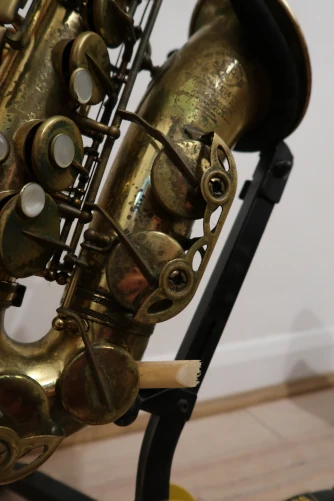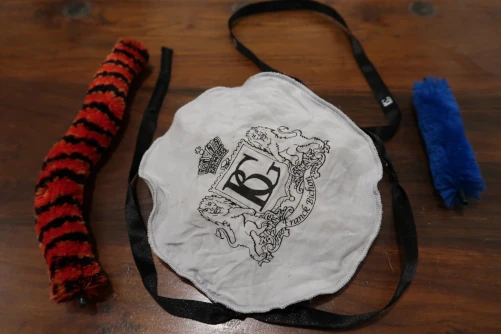Cleaning and caring for your saxophone is extremely important, prolonging the life of the instrument and ensuring fewer visits to the sax technician. Taking care of your saxophone is like brushing your teeth – regular cleaning with the correct technique will keep your instrument in the best health possible. But what are the best saxophone cleaning supplies? And what is the best way to clean your sax? I’ve assembled the perfect routine to clean your saxophone based on my own experience and conversations with expert sax technicians. Read on to find out more, and how to clean your saxophone after every practice session:
Saxophone Cleaning Supplies
Use a Saxophone Pull-Through Cleaner
This style of saxophone cleaner is the best for clearing large amounts of moisture out of the instrument quickly. I recommend doing two passes with the pull through as the first stage of your saxophone cleaning regimen.
Use A Saxophone Neck Cleaner and Pad Saver
The cleaning tool known as a saxophone pad saver has three sizes. One for the body of the instrument, one for the neck (saxophone neck cleaner) and one for the mouthpiece. After using the pull through, I like to put the Pad Saver into the saxophone, leaving it for approx. 5 mins to absorb any remaining moisture. While the pad saver is working its magic, you can use the saxophone neck cleaner to remove any condensation from the neck, and clean the mouthpiece. Once this is done, remember to remove the pad saver from the body of the instrument, to remove the source of moisture.
How to Clean a Mouthpiece for Saxophone
Regular cleaning of the mouthpiece is advised to avoid a build up of hard deposits which can be hard to remove without scratching your mouthpiece, and can change the sound your instrument makes. Always use COLD water to clean a mouthpiece for saxophone, especially if it is made from ebonite or hard rubber. Hot water can discolour the mouthpiece or change the texture of the surface.
How to Use a Saxophone Stand
The saxophone stand is the most important tool for cleaning your sax, believe it or not! Resting your saxophone on the saxophone stand permanently doesn’t just make your room look pretty! It allows the instrument to fully dry out overnight. If you put the saxophone back into the case, it will take much much longer to fully dry out. A saxophone stand will maintain the health of your instrument. The only consideration when using a stand is if you have small children or pets that could damage the instrument! In this scenario maybe the saxophone case is a safer option! Always put the neck back into the body of the instrument when leaving it to dry out on the stand.
What is the Best Saxophone Stand?
The main issue is that your instrument has a chance to dry out every time you play it, so whether your saxophone stand is from Argos, is a purpose built K&M Saxophone Stand, or you opt for a wall mounted saxophone stand for display purposes, you will be caring for your instrument in the best way possible
Keep the Keys Open
Saxophone keys are mostly open, but some do rest shut and these ones are always the first pads to become damp and damaged. When resting your sax on the stand, insert a broken or old reed into the low C# key. This will prop open your G# and C# keys, allowing them to dry out fully. This helps to avoid the ‘sticky’ G# key issue which is a common issue with saxophones. If you want a branded alternative to a broken reed, there are different types of products sold as ‘key props,’ such as the ‘Key Leaves' brand.
Here is an example of how to prop your C# key open using a reed stub on a Hercules Saxophone Stand:

Other Saxophone Cleaning Supplies
There are many other cleaning supplies available for saxophones, but many of them are unnecessary. I would recommend avoiding any powders that claim to dry out sticky keys, as these create more problems than they solve. A saxophone mouthpiece brush can be useful but make sure it is made of soft material like a pad saver(like the one pictures above) to avoid scratching the mouthpiece.
How to Clean Your Saxophone – A Summary
• Use a saxophone pull through to remove moisture (at least two passes)
• Insert a Pad Saver into the body of the instrument and leave for 5 mins
• Clean the saxophone neck and mouthpiece using a cleaner or pad saver
• Remove the Pad Saver from the instrument and put the neck back in
• Place the instrument on a saxophone stand
• Prop the C# key open with either an old reed or branded product
How do I Book Private Saxophone Lessons?
Just visit our Saxophone Lessons Page to find out more, or click the link below if you're ready to get in touch and start taking private saxophone lessons!
